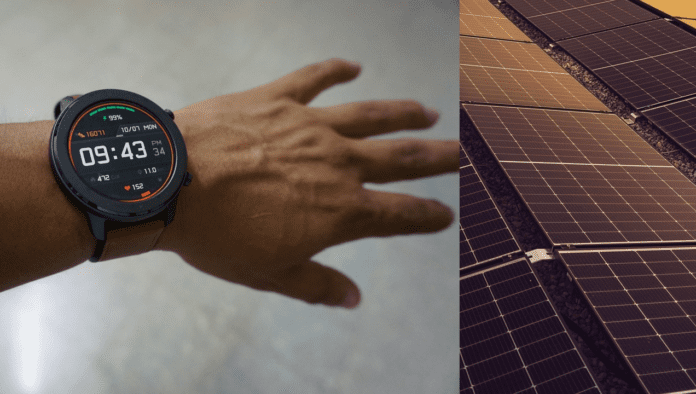This post is also available in:
 עברית (Hebrew)
עברית (Hebrew)
Researchers at the Center for Emergent Matter Science at Riken University in Japan have made a significant breakthrough in wearable technology with the development of a stretchable solar cell that can expand to nearly 1.5 times its original size. This innovation results in only a 20 percent decrease in power conversion efficiency, making it a promising solution for powering future wearables without the need for external charging.
Current smartwatches and health trackers can monitor various health metrics, including heart rate, blood oxygen levels, and even stress and glucose levels. As these devices become more common, continuous monitoring becomes essential for patients managing specific health conditions. However, the reliance on batteries means these devices must often be removed for recharging, creating a gap in continuous tracking.
Traditionally, solar cells have been rigid and unsuitable for wearable technology. Kenjiro Fukuda, a senior research scientist at Riken University, likened conventional solar cells to plastic wrap, which can stretch only slightly before tearing. To address this limitation, Fukuda and his team opted for a novel approach: using stretchable materials for every layer within the solar cell.
Their research led to the incorporation of an organic compound known as ION E in the electrode layer, enabling the solar cells to stretch by 50 percent without significant efficiency loss. During testing, the solar cell maintained approximately 80 percent of its power conversion efficiency, a remarkable feat for such a flexible device.
Moreover, the addition of ION E had an unexpected bonus—it enhanced the adhesion between the various layers of the solar cell. Improved adhesion allows the electrode to better manage the strain from the active layer, which is responsible for converting light into electricity, thereby enhancing the overall stretchability of the device.
While the potential for large-surface-area solar cells that generate more energy is promising, the technology is not ready for market release yet. The research team must address the polymer’s low conductivity, which hampers the efficient transport of electricity generated by the solar cells. Fukuda stated that efforts are underway to overcome this challenge.
These groundbreaking findings were published in Nature Communications, marking a significant step toward the future of self-sustaining wearables that could revolutionize personal health monitoring.


























